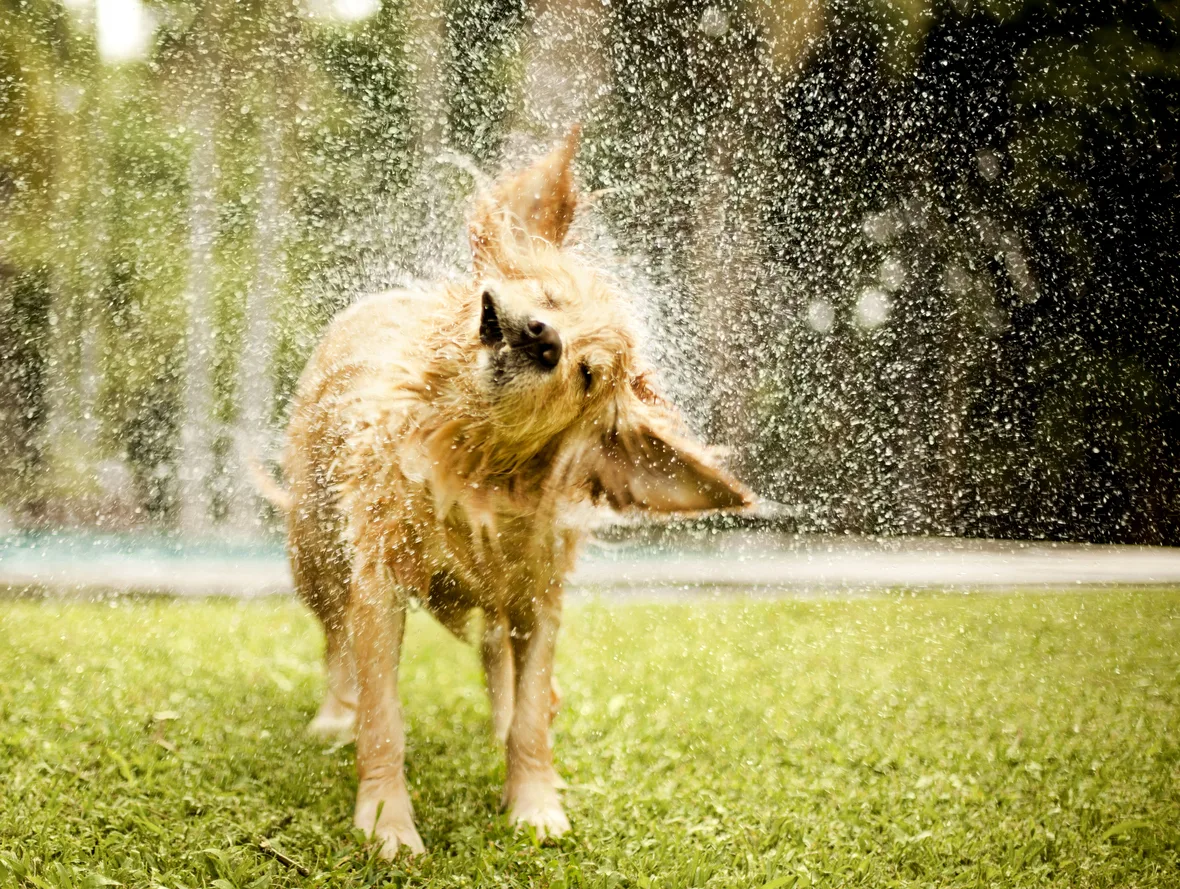Is there really anything better than spending long, lazy (or active!) days outside in the sun with your favorite four-pawed buddy? It often seems as if summer is made for dogs and their owners; there’s so much opportunity for adventure, excitement, and fun. Trees to sniff, hikes to walk, puddles to play in, lakes to swim in, and very rude squirrels to bark at – okay, that one’s only really fun for the dog.
As someone who shares your life with a pup, it is your duty to keep your dog safe on every adventure. Summer fun in the carries its own set of risks that can injure your dog or even make him sick, but you can proactively prevent harm pretty easily with just a few simple strategies.
From which bodies of water to avoid swimming in to preventing Lyme disease from ticks, here’s what you need to know to keep your dog safe.
Flea, Tick & Worm Prevention
First and foremost, let’s talk about parasites. These ugly little creatures see your dog as a really big snack, and they’re more than happy to transfer diseases to him and make him sick. Moreover, all three are harder to treat than they are to prevent, so it makes more sense to be proactive.
As a dog owner, you have three major parasites to be concerned about:
- Fleas
- Ticks
- Worms
Fleas are fleas; there are a few different species, but they essentially all respond to the same treatments. Ticks and worms, on the other hand, come in a few different species that may change how you prevent them from taking hold.
The tick family includes deer dicks, dog ticks, black-legged ticks, Lone Star ticks, long-horned ticks, cow ticks, and over 850 other species of tick. However, only deer ticks, dog ticks, and Lone Star ticks pose a specific problem for dogs, mostly because they carry Canine Lyme and other potential diseases.
“Worms” is an umbrella term for anything worm-line that can parasitize your dog, including roundworms, hookworms, tapeworms, and heartworms. The latter is the most serious of all worms, and can be fatal if left untreated.
Treating fleas, ticks, and worms should start with using a regular monthly flea and tick population, especially if you spend time outside. Dogs should also be given a separate heartworm preventative year-round to address any insidious infections.
Protect Your Dog’s Paws From Hot Pavement
Summer brings higher temperatures, both above in the sky and underfoot. Dark asphalt can reach temperatures high enough to burn sensitive paws in the midday sun, so be aware of the ambient temperature before you leave to have fun.
Booties are an option, if your dog will wear them, as is staying on the grass – but this can be difficult to enforce in the city or in urbanized locations.
Swimming Safety
Even dogs who can swim well can sometimes find themselves in trouble if they swim out too deep, jump off a boat, or just panic from being in deep water. And it isn’t just natural bodies of water that pose a problem; your backyard pool and hot tub pose just as much of a risk.
The best way to keep your furry friend safe is to have him wear a life jacket at all times when he’s near the water – pool or otherwise. Keep your pool fenced off, locked, and inaccessible to dogs (or children), and don’t let your dog swim alone, full stop.
Think of his life jacket as a fail safe. If he does find himself struggling to swim, the jacket will keep him afloat until he gets to shore or you rescue him.
Water Health
Lassie, Little House on the Prairie, and The Adventures of Huckleberry Finn – what these books have in common is they all detail the timeless American tradition of heading down to the creek or ol’ swimming hole to cool off.
Unfortunately, that kind of behavior can land you and your dog in hot water – not literally, of course, but definitely figuratively.
That’s because bodies of water, including puddles, lakes, rivers, and oceans, can experience algae, amoeba, and bacteria blooms in summer. These heightened levels can make you and your dog sick, as can pollution, runoff, and localized sewage dumping.
Think that crystal-clear brook is fine? You should never assume that just because water looks clean, it is clean. The only way to know for sure is with water testing, and that can be extremely expensive.
If you do want to take your pup swimming, stick with common swimming spots you know are safe. See if your city or town screens for bacteria levels, and be sure they’re within acceptable ranges each morning before you head out.
Doggie Dehydration
Drink plenty of water: it’s such simple advice, but so many of us overlook it in the summer when our lives get busy and we’re having fun. Like you, your dog can become seriously dehydrated if he doesn’t stop for a water break when exercising. The summer sun exacerbates dehydration, meaning she will need more water during warm weather than she otherwise would.
The simple solution is to carry bottles of cool water with you when you head out. Try taking a small water bottle and filling it ¾ of the way full. Freeze it, and take it out in the morning before you leave. By the time you (or she) needs it, it will be thawed enough to drink, but good and cold.
Additionally, don’t forget that dehydration isn’t just about water; it’s about losing precious electrolytes like sodium, potassium and magnesium, too. If you’re only giving your dog water, you could be flushing those electrolytes out, making the problem worse. Bring along some snacks and let her have a portion of her meal with each pit stop – it will help to prevent canine hypocalcemia, hyponatremia, and hypokalemia.
You and your dog are going to have so much fun together this season – you just have to make sure you can have all that fun safely. Use the tips on this list and you’ll both spend more time relaxing, playing, and enjoying yourselves, rather than recuperating from illnesses or injuries along the way. Happy summer!

